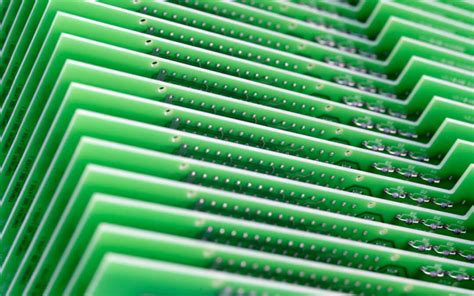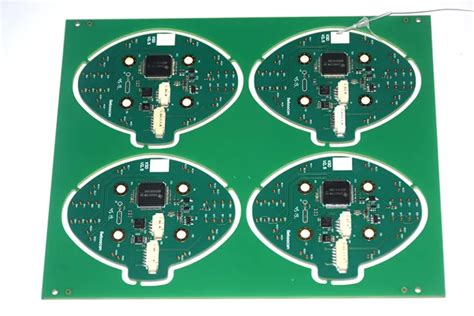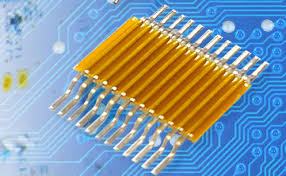Effective Strategies for Industrial Control PCB Assembly

Key Takeaways
When it comes to industrial control PCB assembly, understanding the essential components and processes is critical for enhancing efficiency and reliability. The central theme revolves around striving for excellence in PCB assembly or PCBA practices. Key takeaways emphasize the importance of implementing best practices that not only reduce production time but also increase the quality of the final product.
To optimize PCB manufacturing processes, various techniques can be applied, including adopting advanced soldering methods and ensuring proper thermal management. Innovations in design, such as utilizing multi-layer boards or incorporating components that can withstand harsh industrial environments, significantly contribute to product durability.
Moreover, effective communication among team members and meticulous planning during assembly play significant roles in minimizing errors. It is important to monitor performance metrics regularly to pinpoint areas needing adjustment.
"Failure to plan is planning to fail." – This simple yet powerful adage applies greatly in the realm of industrial control PCB assembly.
In addition, embracing automation technologies can streamline workflow, reduce labor costs, and enhance the precision of assemblies. This not only aids in achieving greater throughput but also positions companies to adapt swiftly to evolving market demands.
Thus, embracing these strategies will ensure a robust approach towards achieving high-quality PCBA, ultimately leading to superior industrial control systems that meet rigorous performance standards.

Introduction to Industrial Control PCB Assembly
In the realm of electronic manufacturing, pcb assembly plays a crucial role, particularly in the field of industrial control. This process involves creating printed circuit boards (PCBs) that are fundamental to various industrial applications, such as automation systems, robotics, and power management. The intricacies of pcb assembly encompass multiple stages, from design and fabrication to assembly and testing. Understanding the best practices for PCBA (printed circuit board assembly) is essential for optimizing production efficiency and ensuring the reliability of industrial control systems.
One of the first steps in ensuring effective pcb assembly is selecting appropriate materials and components that can withstand the demanding environments typical in industrial settings. Components should be chosen based on their functionality, durability, and compatibility with the PCB design. Moreover, strategies like automated soldering techniques can enhance precision while reducing production time.
A well-organized workflow during pcba helps minimize errors and delays. Investing in efficient equipment can lead to streamlined operations, thus optimizing manufacturing processes. Additionally, implementing quality control measures throughout the assembly process ensures that each finished board meets stringent standards. By focusing on these aspects, manufacturers can significantly improve the performance and longevity of their products.
| Key Component | Function |
|---|---|
| Resistors | Limit current flow |
| Capacitors | Store electrical energy |
| Integrated Circuits | Manage complex tasks |
| Connectors | Provide interfaces for components |
By embracing innovations in design and assembly technology and focusing on quality assurance practices throughout every stage of production, industries can achieve higher levels of efficiency and reliability in their pcb assembly processes. This foundational understanding will serve as a guiding principle as we delve deeper into various aspects of industrial control PCBs in subsequent sections.
Key Components of Industrial Control PCBs
Industrial control PCBs (printed circuit boards) are integral to automation and control systems, serving as the backbone of various electronic applications. The critical components of these PCBs include resistors, capacitors, inductors, and integrated circuits. Each element plays a pivotal role in ensuring the functionality and efficiency of industrial systems. For instance, resistors help manage current flow, while capacitors store and release energy as needed, contributing to signal stabilization. Furthermore, inductors are essential for filtering unwanted frequencies, enhancing the overall signal integrity within the system. Integrated circuits serve multiple functions; they can compute data or act as controllers for various processes. The selection and arrangement of these components directly influence the performance and longevity of the pcba (printed circuit board assembly). It is essential for designers to consider factors such as thermal management and electromagnetic interference during the design phase to ensure optimal performance. By implementing robust design principles that prioritize reliability and efficiency, manufacturers can achieve high-quality industrial control pcb assemblies, ultimately enhancing system performance across a wide range of applications.
Best Practices for PCB Assembly in Industrial Applications
When it comes to pcb assembly in industrial applications, adopting best practices is crucial for ensuring efficiency and performance. One of the fundamental strategies is to implement a design for manufacturability (DFM) approach, which focuses on simplifying the pcba layout and minimizing potential issues during assembly. This includes optimizing component placement to reduce production time and avoiding complex geometries that can hinder the soldering process. Additionally, it’s essential to use accurate solder paste application techniques, as improper amounts can lead to poor connections or solder bridging.
Moreover, utilizing automated inspection systems aids in maintaining high quality standards throughout production, allowing for real-time monitoring of the assembly process. Keeping a stringent control over raw materials is equally important; selecting high-quality components enhances the overall reliability of the final product. Training personnel on the latest techniques and technologies related to pcb assembly is also vital, as skilled operators can significantly improve assembly efficiency and reduce defects.
Lastly, establishing robust feedback loops between design engineers and assembly personnel facilitates continual improvement based on real-world data. By adhering to these best practices, organizations can not only enhance the quality of their pcba but also optimize their manufacturing processes, ultimately leading to increased competitiveness in the industrial sector.

Techniques for Optimizing PCB Manufacturing Processes
In the realm of pcb assembly, optimizing manufacturing processes is essential for achieving high efficiency and maintaining quality standards. One approach to this is the utilization of advanced pcba techniques that focus on precision and accuracy. First, investing in automated assembly solutions can significantly reduce human error and increase production rates. Automation not only enhances consistency in component placement but also facilitates faster cycle times, thereby improving overall productivity. Another effective technique involves implementing a robust feedback system that monitors production metrics in real-time; this allows for immediate adjustments, reducing waste and minimizing defects.
Furthermore, adopting modular design principles in pcb assembly can streamline assembly processes, as smaller components are easier to handle and integrate into the larger system. Utilizing high-quality materials not only prolongs the lifespan of the pcba but also ensures that the final product adheres to industry standards for reliability. Continuous training for personnel involved in assembly is another critical element; skilled operators are more adept at identifying potential issues before they escalate, thus maintaining operational integrity throughout the manufacturing process.
Lastly, incorporating Design for Manufacturability (DFM) practices during the design phase can lead to substantial benefits. By focusing on how easily a product can be manufactured at an early stage, designers and engineers can devise solutions that optimize both performance and cost-effectiveness during pcb assembly. Overall, these techniques reinforce a systematic approach to enhancing efficiency while ensuring quality remains uncompromised in industrial control applications.
Innovations in PCB Design and Assembly Technology
In the realm of industrial control PCB assembly, continuous innovation in design and assembly technology plays a pivotal role in enhancing both productivity and quality. Recent advancements have introduced sophisticated PCB assembly techniques that utilize automated processes, significantly reducing the risk of human error during manufacturing. For instance, the integration of surface mount technology (SMT) has revolutionized the way components are placed on boards, allowing for greater precision and speed in the PCBA process. Additionally, the adoption of advanced materials, such as flexible substrates and high-density interconnects (HDI), has enabled manufacturers to create more compact and efficient designs that meet the rigorous demands of industrial applications.
Moreover, employing smart manufacturing practices through IoT connectivity allows real-time monitoring of equipment and processes during pcb assembly, facilitating prompt adjustments that enhance operational efficiency. The use of sophisticated simulation software has also streamlined the design phase, allowing engineers to predict performance issues before physical production begins, which can significantly reduce time-to-market for new products. These innovations collectively contribute to a more reliable production framework, thereby meeting stringent regulatory standards in industrial settings and delivering superior products that ultimately elevate PCBA performance in various applications. As these technologies continue to evolve, they promise even greater enhancements in manufacturability and sustainability within the industrial control PCB assembly landscape.
Ensuring Reliability and Quality in PCB Production
Achieving reliability and quality in PCB production is pivotal, especially in the context of industrial control systems. The manufacturing of printed circuit boards (PCBs) is an intricate process, and implementing best practices can significantly influence the overall performance of the end product. One of the fundamental strategies involves rigorous quality control measures at each stage of the PCB assembly process. This includes thorough inspections and testing procedures that ensure every component meets industry standards.
Moreover, utilizing advanced technologies such as automated optical inspection (AOI) can enhance detection efficacy for defects during the PCBA phase. These inspections help in identifying issues such as solder joint integrity and component placements, which are critical to ensuring long-term reliability.
In addition to quality inspections, integrating robust materials that can withstand varied environmental conditions is essential. Choosing materials with appropriate thermal resistance and lower coefficients of expansion can minimize failures caused by temperature fluctuations during operation.
Furthermore, meticulous planning during the design phase plays a vital role in facilitating an efficient PCB assembly process. Techniques such as implementing design for manufacturability (DFM) can streamline production workflows and reduce potential problems related to layout challenges.
Overall, fostering a culture that prioritizes attention to detail in every aspect of industrial control PCB assembly not only enhances reliability but also contributes significantly to maintaining high-quality standards throughout the manufacturing lifecycle.
The Role of Automation in PCB Assembly Efficiency
In today’s fast-paced manufacturing environment, the use of automation in PCB assembly is increasingly vital for enhancing productivity and ensuring consistent quality. Automated processes significantly reduce human error and improve the accuracy of PCBA operations, leading to a more efficient workflow. For instance, automated pick-and-place machines can swiftly and precisely position components on the printed circuit board, which not only accelerates the assembly process but also ensures a higher level of placement accuracy. Moreover, automated inspection technologies, such as automated optical inspection (AOI) systems, are critical for identifying defects that may arise during the PCB assembly process. These systems enhance reliability by allowing for real-time quality control and immediate corrective actions where necessary. Consequently, integrating automation into industrial control PCB assembly aligns with best practices focused on maximizing efficiency and reducing downtime. As industries continue to embrace these technological advancements, the capability to achieve consistent excellence in PCBA operations becomes ever more attainable, ultimately fostering a competitive edge in today’s market.
Future Trends in Industrial Control PCB Assembly
As technology continues to advance, the landscape of industrial control PCB assembly is experiencing significant transformations that promise to enhance the efficiency and effectiveness of PCBA processes. One notable trend is the growing integration of IoT (Internet of Things) capabilities within PCBs, allowing for real-time monitoring and data analysis. This integration not only improves operational oversight but also facilitates predictive maintenance, ultimately leading to decreased downtime and improved productivity. Additionally, the adoption of Industry 4.0 principles is driving increased automation in pcb assembly, which streamlines manufacturing workflows and reduces human error. Companies are also focusing on eco-friendly materials and manufacturing practices, responding to the rising demand for sustainable solutions in electronics production. Innovations such as advanced soldering techniques and automated inspection systems further enhance reliability and quality within the production process. As these trends unfold, industry players must adapt to remain competitive, leveraging emerging technologies that optimize both performance and environmental stewardship in PCB assembly processes.
Conclusion
In summary, effective pcb assembly strategies are crucial for optimizing the manufacturing processes of industrial control devices. By focusing on best practices, manufacturers can ensure that their pcba processes are not only efficient but also enhance the overall reliability and quality of the final products. Embracing innovations in PCB design and assembly technology allows companies to stay competitive in a rapidly evolving market. It is essential to integrate advanced techniques that streamline operations and reduce overhead costs while maintaining a high standard of quality. As automation continues to shape the industry, future trends in industrial control PCB assembly will likely pivot towards even greater efficiency and effectiveness. Ultimately, by prioritizing these strategies, businesses can achieve improved performance and better meet the demands of their clients while fostering a sustainable production environment.

FAQs
What is PCB assembly (PCBA)?
PCB assembly, commonly referred to as PCBA, is the process of connecting electronic components to a printed circuit board (PCB) to create a functioning electronic circuit. This process involves various techniques such as soldering, mounting, and testing.
What are the key components of industrial control PCBs?
The essential components typically include resistors, capacitors, integrated circuits, and connectors. Each of these parts plays a crucial role in ensuring the reliability and efficiency of industrial control PCBs.
How can I optimize my PCB assembly process?
Optimization can be achieved through several strategies, such as implementing automated manufacturing techniques, utilizing the latest design software, and adhering to best practices in production management. Focusing on quality control during the pcb assembly process is also vital.
What innovations are impacting PCB design and assembly?
Recent innovations in materials, such as the development of flexible PCBs, along with advanced soldering techniques like reflow and wave soldering, are significantly enhancing the performance and durability of PCBA in various applications.
How do I ensure reliability in PCBA?
To ensure reliability, it’s essential to conduct thorough testing throughout the manufacturing process. Techniques like thermal cycling tests or environmental stress screening help identify potential failures before deployment.







